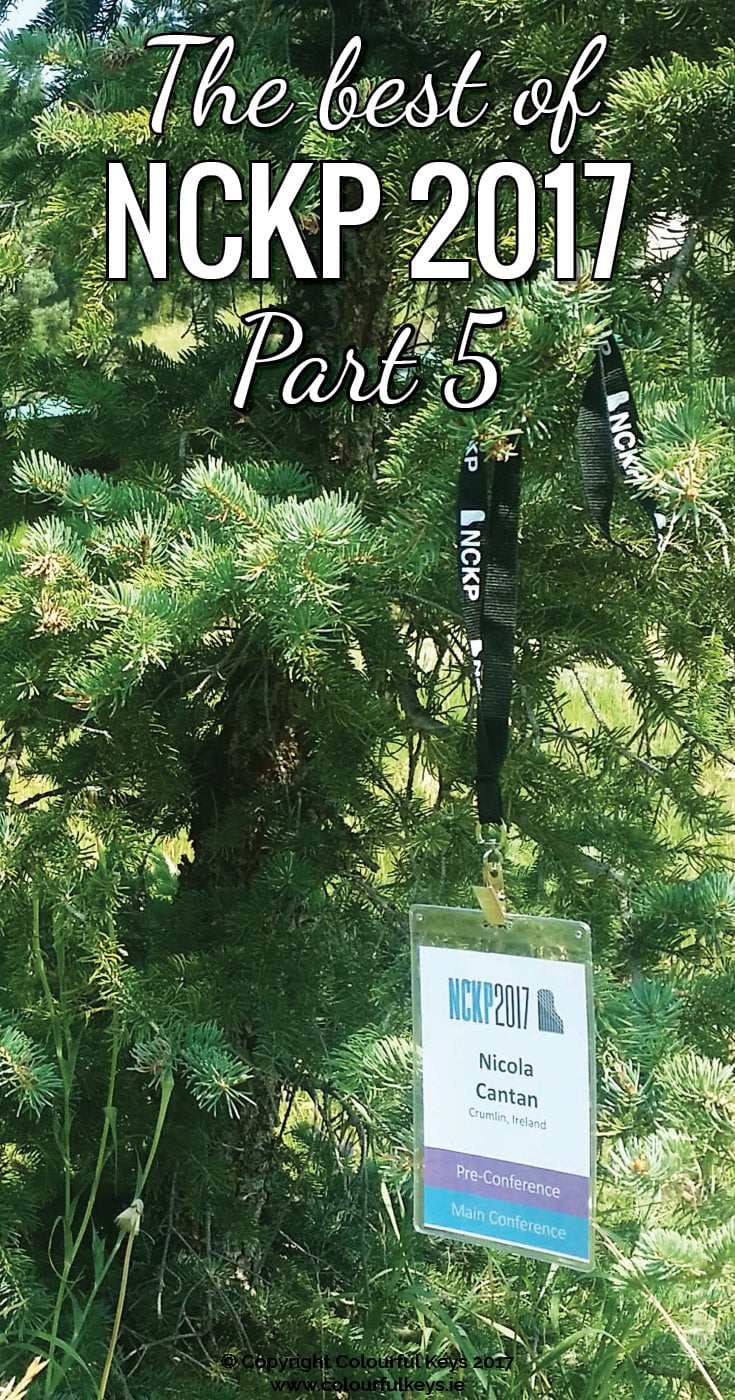I know, I know. You went to a piano conference and you heard beautiful music? Isn’t that painfully expected?

What I’m talking about here is not the music I heard, but the focus of each of the teachers. No matter what they were teaching – five finger pieces or Gershwin – they were each focussed on the beauty in the music their student was creating.
The Joy of Improvisation
“There’s no right or wrong, you just do it – for fun. Like playing with clay.”
– Bruce Berr
Nothing said pure joy of music better than the improvisations at NCKP 2017.
In Tim Topham’s harmony workshop he had teachers composing and playing four chord patterns on the fly, showing how we can use the circle of fifths to make this really accessible for our students. The energy and laughter in the room was palpable – just think of the kick students would get out of this if the teachers were having this much fun!

Bradley Sowash got his student using neighbour notes, fills and repeated note to embellish her piece. These practical explanations of jazzy ideas are what I’ve come to know him for – but the highlight of his session for me was when he sat back to let his student play her own composition.
When she started to play he reclined in his chair, gazed at the ceiling and really listened to her performance. He wasn’t whirring, ready to interrupt with criticism, just revelling in her music.
I could describe many more improvisations from the conference, it was a constant theme, and each one was probably the most beautiful and authentic moment of the demonstration.
Finding the Beauty in Everything
In the closing session of NCKP 2017 Marvin Blickenstaff introduced his student by saying (almost with a tear in his eye):
“I would like to introduce you to one of my very best friends.”
He had been working with this student for 6 years. She was clearly very talented, worked extremely hard, and had supportive parents. It’s easy to find the joy in teaching a student like that, and this (although lovely), wasn’t what interested me.
What caught my attention most was when Robert Duke ensured us all later that even with a beginning student, Marvin teaches in just the same way. He’s still focussed on and absorbed by the beauty of the music.

In the Q&A a teacher in the audience asked about how this would look with a student in the Dozen a Day Minibook, how could he teach the beauty in such a simple piece? The answer says it all:
“If you haven’t practiced to the point where you can play your student’s five finger piece beautifully – you’re not ready to teach it.”
This attitude was apparent also in the presentations by Bruce Berr,S ara Ernst, Jovanni-Rey de Pedro, Catherine Rollin, and many more. When they mentioned a technical aspect it always came with an explanation of how it could make the student’s playing more emotive – more beautiful.
How much joy do you find in your students’ playing?
During the PEDX7 sessions there was a presentation from a teacher who had partnered with a music program in a school in Kenya. When the girls were brought to the states they took them to all sorts of concerts, showing them the wide range of wonderful music.
The girls had a great time seeing their first full orchestras, string sections and concert halls; but at the end they had a question:
“Why is nobody smiling? Do they not like playing music?”
I’d like us all to think about that the next time we start getting bogged down in the weeds of teaching our students to play correctly. Are they still getting opportunities to smile and see the beauty in their own music?
Because if not, I don’t know what the point is.
